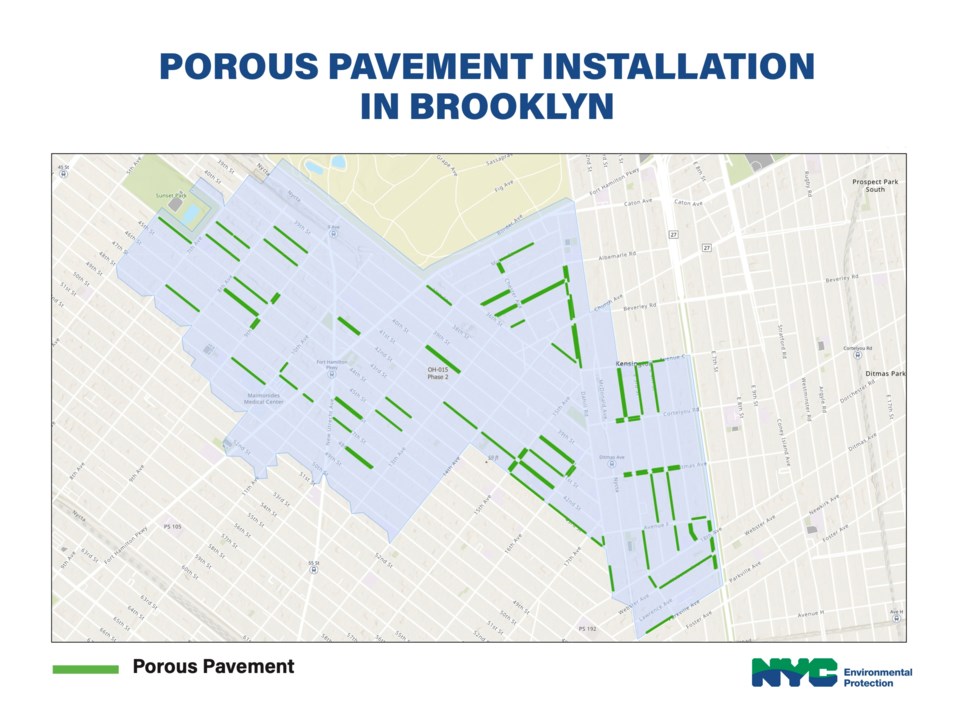Construction started on the installation of seven miles of porous pavement along roadways to help manage stormwater, reduce flooding and prevent sewer overflows in Brooklyn.
The Department of Design and Construction (DDC) is managing the $32.6 million contract for the Department of Environmental Protection (DEP), and the first porous pavements will be seen in portions of Sunset Park, Borough Park and Kensington, according to a press release.
“Climate change is bringing with it rainstorms that can overwhelm our sewers and cause flooding across the five boroughs, which is why we are investing in tools that will divert rainwater away from the sewer system, such as porous pavement,” said DEP Commissioner Rohit T. Aggarwala. “Brooklyn got hit particularly hard by Tropical Storm Ophelia last September and this new porous pavement will help to ease pressure on the sewer system and protect residents during future storms.”

The city's roughly 7,500 miles of sewers and 150,000 catch basins remain the backbone of the city's drainage system. Over the past decade, the DEP implemented the nation's largest Green Infrastructure Program to combat excessive flooding.
Green infrastructure intercepts stormwater before it can drain into the sewers, thereby preserving some capacity in the system and helping to prevent, or reduce, flooding, backups and overflows. Green infrastructure includes porous pavement, curbside rain gardens, permeable pavers, green or blue roofs and underground storage.
Unlike traditional asphalt paved roadways, porous pavement allows stormwater to pass through and be absorbed naturally into the ground. This means less stormwater drains into the sewer system, which will help to prevent flooding, sewer backups into homes and businesses, and overflows into waterways, the press release said.
Porous pavement is installed along the curb line of a street, where the stormwater typically drains towards a catch basin on the corner, and can withstand the weight of motor vehicles, including trucks.
The DEP piloted the use of several different types of porous pavement for a number of years in different boroughs, but this is the first large-scale implementation.
Porous pavement cannot be installed on every block due to other conflicts in the streets and sidewalks, such as sewer and water mains and private infrastructure, according to the press release.
“Porous pavement is only one way DDC is implementing green infrastructure across the city to combat the effects of climate change and reduce flooding in our communities, said DDC Commissioner Thomas Foley. "This is the biggest porous pavement installation this city has seen and it will prevent millions of gallons of stormwater from overwhelming the sewer system annually. With this DDC design, we will implement porous pavement panels in precise areas, allowing for the absorption of stormwater, before they overwhelm catch basins. It will also save time and money, since porous pavement installations can prevent flooding without the need of going underground and expanding sewers.”
The porous pavements will likely be installed in other Brooklyn and Bronx neighborhoods later this year.




